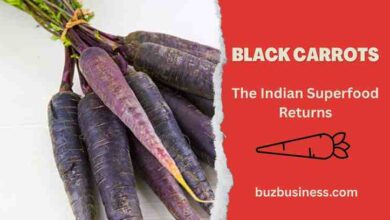Why Is India Called the Land of Spices?

The varied climate, the vast culture, and a history of the country have made India be called by various names. But to my soppy-minded brain, none are as poetic and mouth-watering as “The Land of Spices.” Besides the poetic license, it recognizes a 5,000-year-old tradition. India has been the centre of the world’s spice trade ever since ancient times, stimulating economies and world discoveries and being the gastronomic lifeline of the subcontinent and a significant portion of the world.
Spices mean more than just kitchen essentials in Indian homes. They’re also part of rituals, medicine, and spirituality. There’s culture, Ayurvedic insight, and regional pride in every turmeric sprinkle and cardamom sniff. So why is India the global leader in spice production and influence? And how do these humble seasonings continue to captivate foreign markets?
Explore India’s historical record of spice dominance, its extensive list of advantages, and the future.
What Sparked India’s Spice Legacy?
Indian Spices’ History dates back to the beginning of civilization. In ancient texts (like the Vedas), the purification and healing of the spices were depicted. By 1000 BCE, Indians in distant lands such as Egypt, Mesopotamia, and eventually Rome pined after Indian spices.
The world trade of spices was centred on the Malabar Coast in Kerala, India and all Arabs, Chinese, and Europeans rushed straight to it. People once called pepper “Black Gold” and used it like money. The locals called pepper “Black Gold,” and it was also taken as currency. The enormous profit margins in the spice trade led the Europeans to go by sea. Vasco da Gama’s journey to India in 1498 was as much to draw upon India’s spice pool as to discover.
Indian spices were at the heart of colonialism’s commerce, culture, medicine, and politics centuries ago. Control of territory by the East India Company where spices were grown is a measure of how much in demand these products were. Today, India’s spice tale remains a producer and narrator of a rich, spicy history.
Which Are the Major Land of Spices Produced in India?
More than 75 of the 109 globally known spices are grown in India. These are vast in range, with chilies burning your tongue and fennel cooling you.
As we are going to analyze the key spices where India leads:

1. Turmeric (Haldi)
This golden root is not just for show. Andhra Pradesh and Tamil Nadu turmeric is also famous for its curcumin content. It is found in almost every Indian meal, religious ritual, and skin care solution. Turmeric is applied to the bride and groom at weddings to cleanse and bless them.
2. Chillies (Mirchi)
More chilies are consumed and exported by Indians than any other people. Importers worldwide covet Andhra Pradesh’s Guntur and Karnataka’s Byadgi chilies. Guntur chilies are hot, and Byadgi chilies are employed in pickles and colorful curries.
3. Cumin (Jeera)
The cumin is an essential Indian ingredient. It could smell its soil heaven scent, moderated dals, and biryanis. India produces most of the cumin in two states, Rajasthan and Gujarat. People also make use of it as a type of home remedy that aids in digestion and eliminates stomach inflation.
4. Coriander (Dhaniya)
Chefs greatly use coriander seeds and leaves. It also adds a lemon-like flavor to the spice mixings; leaves are used to garnish curries and chaats.
5. Cardamom (Elaichi)
Cardamom, or the Queen of Spices, are also flavored in teas, sweets and masala. Our green cardamom is cultivated in Kerala i.e. in Idukki region. Even Ayudvedic doctors employ it to treat stomach and respiratory system.
6. Black Pepper (Kali Mirch)
Otherwise known as king of spices, black pepper was priced higher than gold. Kerala pepper is the most renowned and best in the world, and it is tasty and spicy.
The other great spices include Fenugreek, mustard, fennel, cloves, nutmeg, saffron, and asafoetida. All the spices are produced in the Indian states and comprise the spice basket of India.
What Sets Indian Spices Apart from the Rest
Indian spices are rare in quantity, quality, and purity compared to other spices worldwide.
Terroir-Based Excellence
Wine has terroir, soil, climate, and cultivation methods, and so do Indian spices. Wayanad pepper has a highly distinct taste compared to pepper produced in Vietnam. Why? The geography and microclimates of India contribute to the personality of spices. This is the reason why India has several Geographical Indication (GI) tags, which include:

- Malabar Pepper
- Coorg Green Cardamom
- Sikkim Large Cardamom
- Byadgi Chilli
Traditional Agricultural Methods
Intercropping, organic manure, and traditional methods are employed intensively. These practices prevent the overuse of chemicals and preserve organisms’ diversity in the soil. These methods steer clear of too many chemicals and keep the soil’s living things diverse.

Intercropping, traditional practices, and the use of organic manures are associated with the intensification of spices by Indian farmers.
Freshness and Essential Oils
Indian spices have higher essential oils than other spices and are more fragrant and flavorful. The reason is that the farmers harvest the spices and then process them. They pay extra attention to sun drying, sorting by hand, and processing them.
All these this is the reason why Indian spices are so much popular in the world not just in terms of flavor, but also in terms of value.
Why Are Indian Spices Essential in Daily Cooking?
Home spices are not merely about flavoring—it’s about who they are and what they have always done. When preparing masoor dal or Rogan Josh, spices turn regular food into Indian food.
Deep Flavors Creation
Indian cuisine is a stacking of flavors. The chefs begin by adding tadka (spices fried in oil), then prepare food in mixtures of ground spices, and crown the latter with completions, such as garam masala or dry fenugreek leaves.
Healthy Benefits
Each spice has its part to play:
- Turmeric assists in healing the body.
- Cumin makes digestion more comfortable.
- Asafoetida stops stomach gas.
- Mustard oil makes food last longer.
This pairing of taste and health is why people love Indian food due to its sophistication and comfort
Regional Variety
Indian cuisine is very diverse which is signified by the use of spices. The cuisine of the Kashmiris uses fennel and dry ginger; the Punjabis use garam masala; the south Indians use mustard seeds and curry leaves.
That is why Indian food is not a matter of taste but a family history that people take somewhere in a spoonful of curry.
What Are the Health Benefits of Indian Spices?
Indian spices are so popular with individuals because they taste fantastic and are healthy.
Turmeric
Curcumin, the active compound of turmeric, impinges upon:
- Inflammation reduction.
- Memory enhancement.
- Free radical fighting.
- Joint health support. Golden milk (haldi doodh), now a worldwide health craze, is an old Indian remedy to treat colds and flu.
Ginger
Ginger relieves sore throat, reduces nausea, and increases digestion. During the Indian winters and monsoons, it is necessary to take ginger tea.
Cinnamon
It controls the sugar in your blood and enhances cardiovascular health in desserts and meals. It balances the Kapha dosha, according to Ayurveda.
Clove
Cloves are microbial also, and people love to chew them in order to resolve toothaches. Clove contains an ingredient eugenol, which aids in digestion, and irritated throat.
Fennel & Cumin
These refrigerant spices support the digestion of after-meals, especially in hot climates. Fennel can be found in several restaurants as a freshener of mouth.
Such a combination of taste and nutritional properties places Indian spices among superfoods.
What is the Significance of Indian Spices in the World Trade?
India is the largest spices producer, consumer and exporters in the globe. The problem is provided with the right perspective by figures:
A Giant in Numbers
India manufactures more than 75 per cent of the spices created in the world, which includes most of the 109 types of spices in the world arena. The country produces more than 4 million tonnes of spices annually, of which mass-market spices, like chilli and turmeric, are found along with more exotic varieties, like saffron and long pepper.
In exports, the figures are equally striking. The current statistics indicate that India exports spices worth more than ₹30,000 crore, with exports in more than 180 destinations. The major purchasers are the United States, China, Vietnam, the UAE, Germany and the United Kingdom. These drops are headed by Indian chilli, turmeric, cumin, spice oils, and oleoresins.
The Role of the Spices Board of India
The India Spices Board was constituted in 1987 under the Ministry of Commerce and Industry and is essential to regulating, promoting, and facilitating the spices trade. Its primary functions are:
- Quality certification for export.
- Promotion of Indian spices at international shows and trade fairs.
- Giving subsidies and advice to spice exporters.
- Research and development contribute to improving quality.
- Enabling simpler organic and sustainable agriculture practices.
The board ensures that Indian spices like the FDA, EU, and Codex Alimentarius meet international food safety standards.
COVID-19 and the Increase in Demand
The novel coronavirus is the reason behind renewed global attention to the Indian spices due to their ability to strengthen the immune system. There were massive increases in the worldwide demand for such products as turmeric powder, dry ginger, and garlic powder. The amount exported exploded because, in an attempt to avoid disease, health-conscious consumers sought natural remedies and foods. These occurrences made the status of India as a spice centre of the world even more decisive.
How Are Spices Processed and Preserved?
The next stage in the life of spice begins with harvesting. The after-harvest processing affects India’s ability to maintain India’s international flavour, colour, and hygiene standards industry.
Drying Methods
Spices are sun-dried in the rural regions. However, all that is shifting in the industry. Farmers and processors prefer solar dryers, mechanical dehydrators, and hot air drying rooms because they do not want contamination and need to maintain health and keep essential oils and colours intact. Good drying enhances shelf life and makes spices more saleable.
Cleaning and Grading
Once spices dry, they go through a cleaning process to remove dust, stones, stems, and other unwanted stuff. Big processing plants use fancy machines like air classifiers, gravity separators, and optical sorters to do this job. Spices are then graded based on their color, size, how spicy they are, and how pure they are. The best spices can fetch top dollar in the export market.
Grinding and Blending
To make ground spices, companies use special grinding machines that don’t heat up too much. This helps keep all the good oils in the spices that give them their taste and smell. When mixing spices, big blending facilities use machines to mix everything up just right. They make standard spice mixes for people to buy at home and export. These mixtures include curry spices, masalas, and other hot spices.
Packaging and Storage
Packaging forms an important aspect of preserving spices. Vacuum-sealing, nitrogen flushing and bottling in PET jars are used in modern packaging to guard against moisture and contamination. During the long haul, bulk exporters have multi-layer laminated bags and traceability systems that are barcoded to guarantee freshness.
Warehouses are constructed with climate equipment to avoid decay. These new logistics processes have made Indian spices competitive and withstand the harsh environments of the global supply chains.
What are some of the famous spice mixtures that are applied in Indian food?
Indian cooking is centred on blend of spices. Indians blend their spices rather than pre-made ones like in other food cultures; this imparts more flavours and makes food more complicated.

Garam Masala
Garam masala is one of India’s spice combinations. It is a hot mix of cloves, cardamom, cinnamon, nutmeg, cumin, and peppercorns. Ingredients are geographically changing. North Indian chefs add it towards the end to flavor stews, lentils, and curries.
Sambar Powder
An all-famous South Indian potpourri of coriander, red chilies, urad dal, fenugreek, mustard, and asafoetida spices. It makes sambar taste like a spicy, sour lentil soup, and people eat it with idlis rice.
Chaat Masala
Chaat masala is a black paste of salt with amchur (powdered dried mango), cumin, asafoetida, and pepper, used to garnish fruits, snacks, and salads. It is sour, and there is no chance that anyone can avoid the taste.
Biryani Masala
This spiced blend of star anise, mace, bay leaves, cloves, cinnamon, and black cardamom flavours is the most biryani preparation in India. It makes one of the most popular Indian rice dishes more flavorous.
All the mixes are rooted deeply and, in many instances, have been generational. These masalas are a representation of the locality and local cuisine.
How Do Spices Show India’s Cultural Mix?
Spices are not only a term used for cooking in India, but they also represent culture. Spices are used uniquely by people in various states, which points to taste, custom, belief and lifestyle
Uses in Religion and Rituals
- Turmeric forms part of the Hindu rituals. It is a sign of wealth and holiness which individuals apply at weddings and festivals.
- While doing Aartis, people burn camphor and clove in lamps to cleanse the atmosphere and gain God’s blessings.
- Sandalwood paste mixed with saffron is applied to idols and devotees by individuals as a symbol of respect. Regional Expressions.
Regional Expressions
- Goda masala of Maharashtra is sweet-spicy in taste. It is extremely exotic in the taste because of the presence of coconut and sesame seeds.
- The hottest chili in the world is grown in Assam and Nagaland and it is called Bhut jolokia. It is locally consumed at small proportions.
They show how spices are woven into India’s spiritual, geographic, and emotive heritage.
Are Spices Becoming a Superfood Trend?
Indeed, India is leading the way to this change. Indian spices are central to health and wellness because of their scientifically validated benefi
Spices in Modern Diets
- Turmeric Lattes, or Golden Milk, are now common in cafes as far afield as New York and Melbourne.
- People take ginger shots packed with antioxidants daily to boost their well-being.
- The majority select cinnamon detox teas to boost their metabolism.
Move into Skincare and Supplement Markets
International cosmetics companies add Indian spices to their skincare products. Turmeric, sandalwood, and neem are added to creams, face packs, and soaps. The health supplement industry sells curcumin capsules, clove oil extracts, and cardamom-flavored oils for aromatherapy.
These aren’t fleeting trends. They are evidence-based and supported by wellness influencers, offering new platforms and buyers to Indian spices.
How Is the Government Supporting Spice Farmers?
With the very high strategic significance of the spice business, the Indian government has also initiated policy measures with a specific focus on production modernization to twenty-first-century standards of production, qualitative upgrading of exports, and the welfare of farmers..
Key Schemes and Initiatives
- Mission for Integrated Development of Horticulture (MIDH) provides finance and infrastructure for growing spices.
- Paramparagat Krishi Vikas Yojana (PKVY) promotes organic spice cultivation and offers certification.
- There are also Spice Parks with full facilities, such as at Puttady (Kerala), Guntur (Andhra Pradesh), and Jodhpur (Rajasthan), that are used as cleaning, grading, packing, and export facilitation camps.
Tech and Training
Internet sites provide the following to farmers:
- Weather forecasting for harvest planning.
- Market intelligence is employed to help prevent exploitation.
- Training modules for sustainable practices and pest management.
These measures are designed to make the spice economy strong, fair, and sustainable in the future..
What Challenges Do Indian Spice Farmers Face?
Even with a successful export venture, farmers in the sector have to deal with many problems:
Climatic Vulnerability
Eradic rainfall is caused by climate change, which affects prolonged dry spells and out-of-season floods, directly affecting the yield and quality of spices.
Market Intermediaries
Most farmers use intermediaries who give them low prices. Farmers’ profits are reduced due to the lack of direct access to international markets.
Infrastructure Gaps
Insufficient cold storage, drying, and transport facilities could lead to post-harvest losses and declining produce quality.
Given these challenges, we must invest in rural infrastructure, equitable trade policies, and connectivity to empower farmers.
What Is the Future of Indian Spices?
The future is trendy and tasty. More and more people are asking for spices they can track that are organic and sustainable, and India is set to lead a new world trend.
Trends to Keep an Eye On
- Geographical Indication (GI) Branding: Regional specialties should be promoted to achieve larger global visibility in the market.
- Agri-Tech Integration: Drones, soil sensors, and artificial intelligence-based solutions will enhance yields and quality.
- E-commerce Development: Direct-to-consumer business through companies like Amazon, Flipkart, and specialty brands in spices are rising.
Essentially, the land of spices tale of India is evolving: from the traditional fields to the global supermarkets, from grandma’s kitchen to high-end skincare. With the proper backing, innovative ideas, and positive stories, it will go on to flavor the world for generations to come.
Final Thoughts: Why Should India’s Spice Story Matter to You?
Land of Spices are India’s comfort food, medicine, and cultural symbol. Each pinch of spice mix or each spiced tea sip is filled with tales of growers, traditions, ceremonies, and lands capes. The next time you grab a packet of cumin or turmeric, remember that you’re not just adding flavor to your meal. You’re tapping into a 5,000-year tradition that’s still venerated by individuals all around the globe.



